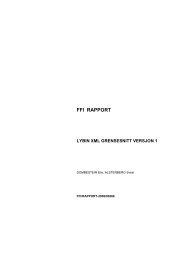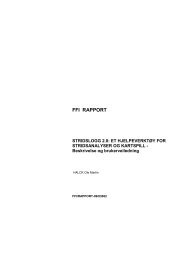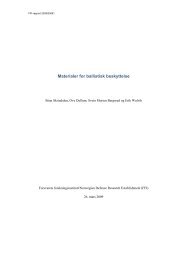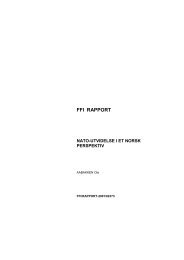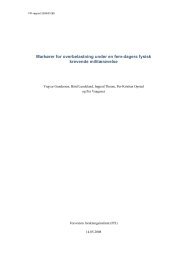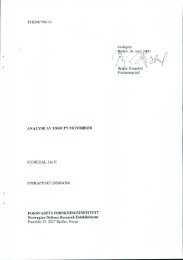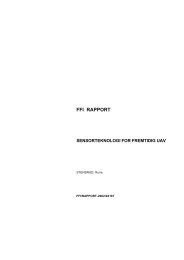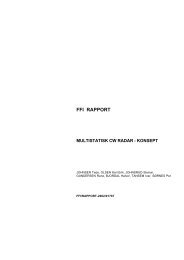Test 2 - FFI rapporter - Forsvarets forskningsinstitutt
Test 2 - FFI rapporter - Forsvarets forskningsinstitutt
Test 2 - FFI rapporter - Forsvarets forskningsinstitutt
Create successful ePaper yourself
Turn your PDF publications into a flip-book with our unique Google optimized e-Paper software.
topics for forthcoming year<br />
(Fuzing; Nanotechnology for Energetics;<br />
Electric Armour; Scaleable Munitions,<br />
MTV ageing, Poly-nitrogen performance)<br />
2004-15 Review paper on Scaleable Munitions 03/05 National Leaders<br />
7 PRESENTATIONS<br />
14<br />
7.1 Ballistics analysis and modelling of ceramic armour subject to KE threat<br />
(Ian Pickup)<br />
In his presentation Ian Pickup focused on the occurrence of dwell and the development of a<br />
system to assess dwell. There is a new programme involving DSTL-PML-<strong>FFI</strong> to develop a<br />
model for quantitative ballistic investigation, analytical/empirical model an the development of<br />
material models. (see appendix F 4)<br />
7.2 Ceramic Protection (Martin van der Voorde)<br />
Examples of finite element simulations (Autodyn) were shown of projectile-target interactions.<br />
Various projectiles (Preformed fragments, AP mine and blast wave interaction) and various<br />
targets were shown (see appendix F 5)<br />
7.3 Penetration of Tungsten Carbide into steel targets (John Moxnes)<br />
The purpose of this presentation was to show that the simulated penetration capability is<br />
dependant on the numerical solver. it was explained that the J-H damage model appears to be<br />
suitable for modelling the fracture of tungsten carbide although plasticity is not accounted for.<br />
Only the Euler solver is now used. (see appendix F 6)<br />
7.4 Methods for simplifying 3D penetration simulations (Jan Arild Teland)<br />
To simplify 3D penetration simulations, a virtual target can be used. A subroutine is then used<br />
to determine the boundary conditions at the projectile surface. In practice this means that only<br />
the projectile is modelled. The boundary conditions are calculated from the cavity expansion<br />
theory. (see appendix F 7)<br />
7.5 Protection of soft skin vehicles (Ove Dullum)<br />
This presentation described the up-armouring of light vehicles used in combat areas. It<br />
described which sections of the vehicle were to be upgraded and how it was designed. It also<br />
showed how the forces can still incapacitate the occupant even though a vehicle is armoured.<br />
(see appendix F 8)



